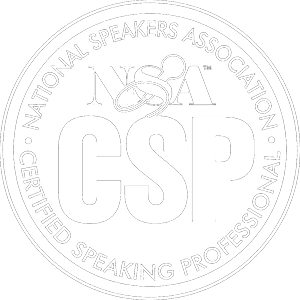Notre Dame vs Army at Yankee Stadium this weekend. American History in action!
To understand how universally significant the Yankee Stadium football games between Army and Notre Dame once were, it is worth revisiting World War II’s Battle of the Bulge. During the winter of 1944-45 in Belgium, American troops were surrounded and being infiltrated by English-speaking German spies dressed as American soldiers.
How did the Americans tell friend from foe?
They asked any unfamiliar face to tell them the score of Army’s 1944 game with Notre Dame.
Because every G.I. knew that at sold-out Yankee Stadium on Nov. 11 — then a holiday called Armistice Day — top-ranked Army had routed No. 5 Notre Dame, 59-0.
“Those games were the Super Bowl of today,” said Joe Steffy, an Army team captain and lineman in the 1940s. “There was no more famous place to perform any sport than Yankee Stadium, and there was no rivalry bigger than Army and Notre Dame. Many years, it was the national championship game.”
Terry Brennan, a fleet back for Notre Dame in the same era who went on to coach Notre Dame, remembered a pregame buildup unmatched by any other week in the schedule.
“For Army week, it was like the whole sports world stopped,” Brennan said. “We got off the train to New York and couldn’t walk across the platform, there was such a crowd. We didn’t even stay in Manhattan; we went 50 miles north to the Bear Mountain Inn, where it was quieter.”
Army and Notre Dame will resume their historic rivalry Saturday at the new Yankee Stadium under different circumstances. Neither team is ranked, though Army (6-4) is bowl-eligible for the first time in 14 years and Notre Dame (5-5) is coming off a 25-point upset of Utah.
But the first college football game at the new Yankee Stadium is also the first Yankee Stadium game between Army and Notre Dame since 1969, and it has stirred ghosts from Knute Rockne to Doc Blanchard.
It is also a time to remember that Notre Dame’s famed “subway alumni” were spawned by the Yankee Stadium games from the 1920s to the 1940s. The term originally referred to first-generation Americans of European descent who flocked to Yankee Stadium from the five New York City boroughs to cheer Notre Dame players with names like O’Donnell, Carideo and Mieszkowski. In the succeeding decades, Notre Dame’s subway alumni represented the next emerging power in America — the sons and daughters of immigrants — and they spread Notre Dame’s popularity nationwide.
Cheering for the other side were hundreds of thousands of Army veterans from two world wars — and their families — who treated the footballers from West Point as if they were a national college team.
This unique rivalry began in 1913 because Yale unexpectedly dropped Army from its schedule. Army, eager to fill the open date, accepted an invitation to host little-known Notre Dame at West Point. Notre Dame was so obscure that The New York Times previewed the game with an article that listed Notre Dame as hailing from South Bend, Illinois, not Indiana.
A daring passing attack, however, led Notre Dame to a shocking 35-13 upset. Army won the rematch the next year, and the annual competition was on.
By 1923, West Point’s on-campus field was too small for the crowds congregating to see the Notre Dame games. The game was moved to Brooklyn’s Ebbets Field, then the Polo Grounds and, finally, in 1925, to Yankee Stadium, which had opened two years earlier. Army won two of the first three games at Yankee Stadium and was heavily favored to win the 1928 game as well. At the half, the score was 0-0.
It was at this moment that Rockne supposedly gave his “Win One for the Gipper” speech, an emotional oration about a deathbed conversation with the Notre Dame great George Gipp, who died of pneumonia eight years earlier.
There is considerable doubt whether Gipp ever uttered such a sentiment to Rockne. Some researchers also dispute when the speech was made. A recent biography, “The Gipper,” by Jack Cavanaugh, quotes Rockne players and assistants who insist the speech was given before the game started.
What is unquestioned is that Notre Dame took a 12-6 second-half lead and held on — even with Army at the 1 as the game ended — before 78,188 roaring fans.
When the tale of Rockne’s motivational speech made it into the New York newspapers, Army-Notre Dame’s intense competition had an immortal hero — and soon, a cinematic champion played by Ronald Reagan — to go with the football drama.
The teams played at Yankee Stadium every year thereafter except in 1930, when the game was played at Chicago’s Soldier Field. The game was occasionally played in snow, sleet and rain and always before crowds of about 75,000. And although Notre Dame won most of the time in the 1930s, the games remained close, with one of the teams usually ranked high enough to be competing for the national title.
There you have it. (GO IRISH)

.jpg)
.jpg)
.jpg)
.jpg)




"I have attended quite a few leadership seminars, and have tried to gather and relate things from each of them, but yours hit all 3 of us with material that relates and for myself commands an internal level of accountability and responsibility in what I do at our company. "
Chris Larente
Construction Superintendent
Park Paving LTD.